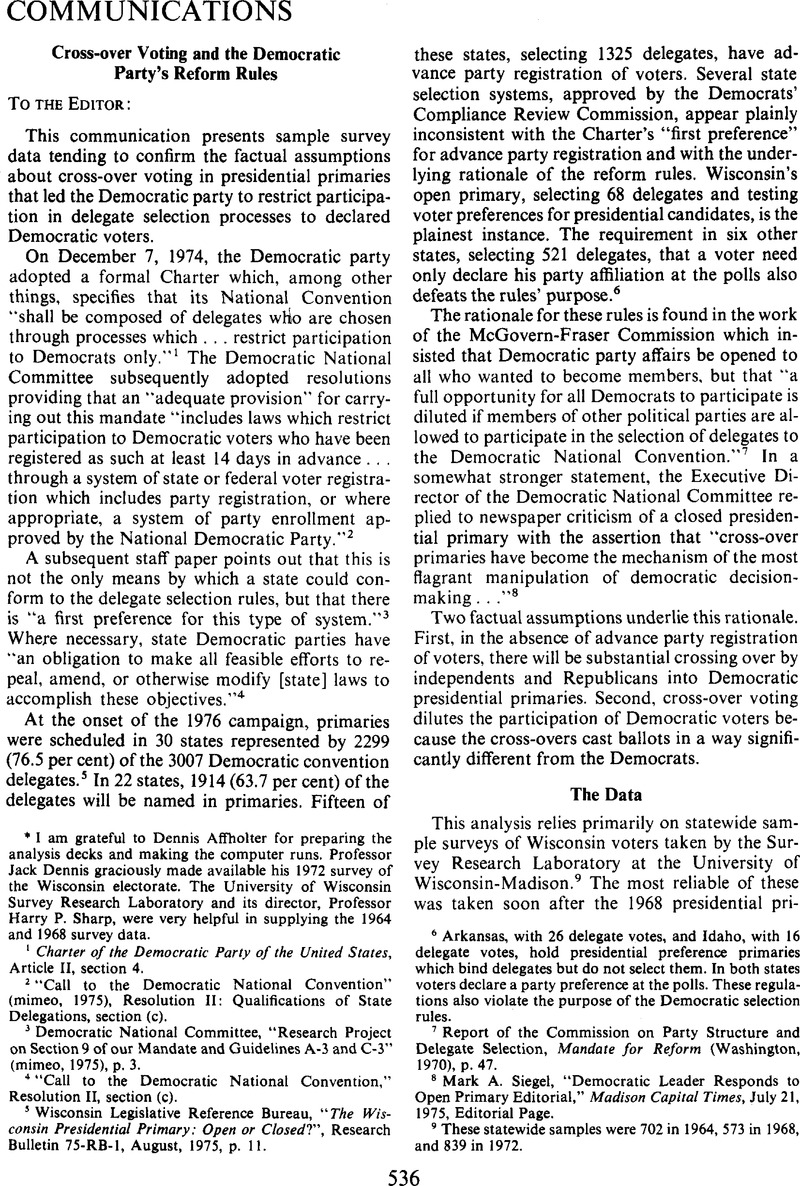Published online by Cambridge University Press: 01 August 2014

* I am grateful to Dennis Affholter for preparing the analysis decks and making the computer runs. Professor Jack Dennis graciously made available his 1972 survey of the Wisconsin electorate. The University of Wisconsin Survey Research Laboratory and its director, Professor Harry P. Sharp, were very helpful in supplying the 1964 and 1968 survey data.
1 Charter of the Democratic Party of the United States, Article II, section 4.
2 “Call to the Democratic National Convention” (mimeo, 1975), Resolution II: Qualifications of State Delegations, section (c).
3 Democratic National Committee, “Research Project on Section 9 of our Mandate and Guidelines A-3 and C-3” (mimeo, 1975), p. 3Google Scholar.
4 “Call to the Democratic National Convention,” Resolution II, section (c).
5 Wisconsin Legislative Reference Bureau, “The Wisconsin Presidential Primary: Open or Closed?”, Research Bulletin 75-RB-1, August, 1975, p. 11Google Scholar.
6 Arkansas, with 26 delegate votes, and Idaho, with 16 delegate votes, hold presidential preference primaries which bind delegates but do not select them. In both states voters declare a party preference at the polls. These regulations also violate the purpose of the Democratic selection rules.
7 Report of the Commission on Party Structure and Delegate Selection, Mandate for Reform (Washington, 1970), p. 47Google Scholar.
8 Siegel, Mark A., “Democratic Leader Responds to Open Primary Editorial,” Madison Capital Times, July 21, 1975Google Scholar, Editorial Page.
9 These statewide samples were 702 in 1964, 573 in 1968, and 839 in 1972.
Comments
No Comments have been published for this article.